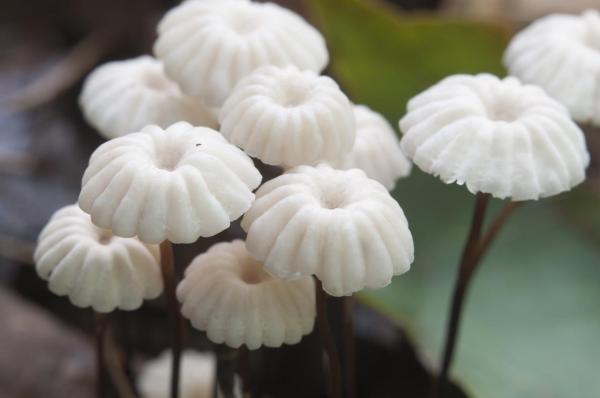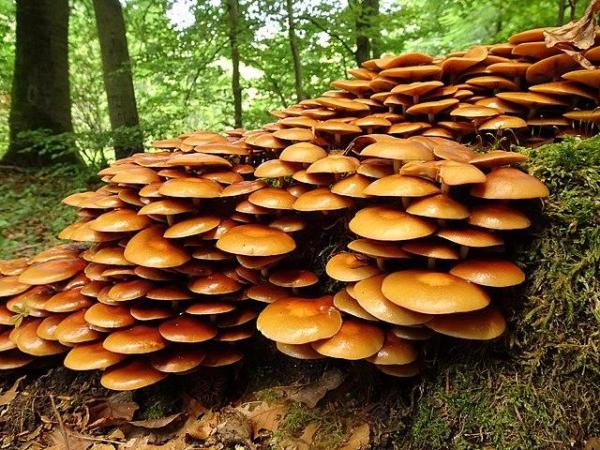What Are Saprophytes?


Saprophytes, also known as saprotrophs, are a fascinating group of organisms that play a vital role in the natural processes of decomposition and nutrient recycling. By understanding the role of saprophytes and appreciating their ecological contributions, we can gain a deeper appreciation for the intricate balance of nature and the vital processes that sustain life on Earth. From fungi to bacteria and protozoa, we will delve into the diversity of saprophytes and discover their fascinating adaptations for thriving in environments abundant with decomposing organic matter.
In this article from thedailyECO, we will explore what saprophytes are, examine what defines them, their ecological significance, and examples of saprophytic organisms across different taxonomic groups.
What are saprophytes?
The concept of saprophytes, derived from the Greek words sapros (putrefied) and phyton (plant), refers to organisms that rely on decomposing plant matter as their food source.
It's important to note that saprophytic organisms exclusively engage in external digestion, acquiring essential nutrients by absorbing organic substances. This absorption occurs through osmosis (in osmotrophic organisms) or phagocytosis (in saprophagous organisms).
It is crucial to differentiate saprophytes from organisms that internally digest decomposing matter, such as scavengers, as saprophytes obtain nutrients externally without ingesting the dead matter.
Ecological importance of saprophytes
They play a vital role in the natural recycling of nutrients in ecosystems. Instead of relying on photosynthesis or predation, saprophytes feed on dead plants, fallen leaves, decaying wood, or animal carcasses.
They break down complex organic compounds into simpler forms, such as carbon dioxide, water, and inorganic nutrients, which can then be reused by other organisms. This process, known as decomposition, releases valuable nutrients back into the environment, making them available for other organisms to use.
The recycling of nutrients by saprophytes is vital for the overall health and balance of ecosystems. Without saprophytes, organic matter would accumulate, and nutrient cycling would be disrupted, negatively impacting the growth and survival of other organisms.
Additionally, saprophytes contribute to the formation of humus in soil, which improves its fertility and supports plant growth. Overall, saprophytes play a crucial role in maintaining the ecological balance and sustainability of natural environments.

Main features of saprophytes
Saprophytes, also known as saprotrophs or saprophytic organisms, possess several key features that distinguish them. Here are the main characteristics of saprophytes:
- Nutritional strategy: saprophytes obtain their nutrition by decomposing dead organic matter, such as plants, leaves, wood, or animal carcasses. They play a crucial role in the process of decomposition and nutrient recycling in ecosystems.
- External digestion: saprophytes engage in external digestion, meaning they secrete enzymes or chemicals that break down complex organic compounds in their environment. This external digestion allows them to extract simpler forms of nutrients, such as carbon dioxide, water, and inorganic substances, from the decomposing matter.
- Potential parasitic behavior: in some cases, saprophytic organisms may exhibit parasitic behavior. This means that they have the ability to switch to a parasitic lifestyle when provided with a suitable host organism. However, not all saprophytes display parasitic tendencies.
- Decomposition enzymes: these organisms produce and secrete specific enzymes that aid in the decomposition process. These enzymes break down complex organic molecules into simpler forms that can be absorbed and utilized by the organism.
- Adaptation to various environments: saprophytes can thrive in a wide range of habitats, including forests, soil, freshwater, and marine ecosystems. They are adapted to effectively decompose organic matter in different conditions and contribute to nutrient cycling in diverse environments.
- Beneficial interactions: some saprophytic organisms engage in mutualistic relationships with plants, forming symbiotic associations. For example, certain fungi form mycorrhizal associations with plant roots, enhancing nutrient uptake for both the fungus and the plant.
- Tolerance to low nutrient conditions: they have adapted to survive in environments with low nutrient availability. They possess strategies to efficiently scavenge and extract nutrients from decaying matter, allowing them to thrive even in nutrient-poor conditions.
Be sure to check this other article, where we explain what symbiosis in biology is.
Where are saprophytes found?
Saprophytes are commonly found in ecosystems where there is sufficient moisture and an adequate amount of decomposing organic matter for them to feed on.
Ecosystems that support saprophytic organisms include those with soils rich in organic matter, such as forest environments with coniferous and deciduous trees. These ecosystems provide abundant decaying trunks, plant remains, and other organic materials that serve as a food source for saprophytes.
Based on the nature of the substrate in which they are found, saprophytes can be classified into different categories:
- Humicolous: these saprophytes inhabit the upper layers of the soil where humus, formed by the accumulation of decomposing plant remains, is present.
- Lignícolas: saprophytes in this category primarily feed on dead wood, including trunks and branches.
- Terrestrials: these saprophytes thrive in areas with limited vegetation and no humus, such as slopes and certain roadsides.
- Folicolous: saprophytes in this group exclusively digest leaves, including both the veins and blade of the leaves.
- Pyrophiles: burned land serves as a food source for saprophytes in this category.
- Corticolous: this group includes saprophytes that feed exclusively on the bark of deciduous and coniferous trees.
By specializing in specific substrates for nutrition, saprophytes contribute to the decomposition process and nutrient cycling in various ecosystems, playing a vital role in maintaining ecological balance.
Examples of saprophytes
Examples of saprophytic organisms can be found across various taxonomic groups, including fungi, bacteria, and certain protozoa. Let's explore some notable examples within each category:
Fungi
- Mushrooms (Agaricus spp.): these familiar fungi are often found growing on decaying organic matter, such as fallen logs or leaf litter.
- Oyster mushroom (Pleurotus ostreatus): this saprophytic fungus is known for its ability to decompose and obtain nutrients from dead wood, making it an important player in forest ecosystems.
- Turkey tail (Trametes versicolor): this bracket fungus commonly colonizes dead tree trunks, breaking down lignin and cellulose for nutrition.
Bacteria
- Streptomyces spp: these filamentous bacteria are known for their role in decomposing plant matter, contributing to the breakdown of complex organic compounds into simpler forms.
- Bacillus spp: certain species of Bacillus bacteria are involved in the decomposition of organic material, aiding in the recycling of nutrients in soil and other habitats.
Protozoa
- Amoebas (Arcella spp.): some amoebas are saprophytic, feeding on decomposing organic material in aquatic environments.
- Vorticella spp.: these ciliate protozoa can be saprophytic, feeding on detritus and organic particles in freshwater habitats.
These examples represent just a fraction of the diverse range of saprophytic organisms found in nature. Be sure to check out this related article, where we delve deeper into the fascinating world of the Protista Kingdom.

If you want to read similar articles to What Are Saprophytes?, we recommend you visit our Biology category.
- Pfenning, L. & Magalhaes, L. (2010). Saprophytic soil fungi and plant pathogens. Manual of Tropical Soil Biology, ACADEMIA Magazine, Accelerating the World's Research , pp:245-250.
- Biosphere Project (2021). The classification of organisms. Ministry of Education, Culture and Sports, Government of Spain . Retrieved from: http://recursostic.educacion.es/ciencias/biosfera/web/alumno/1bachillerato/organis/contenidos11.htm







